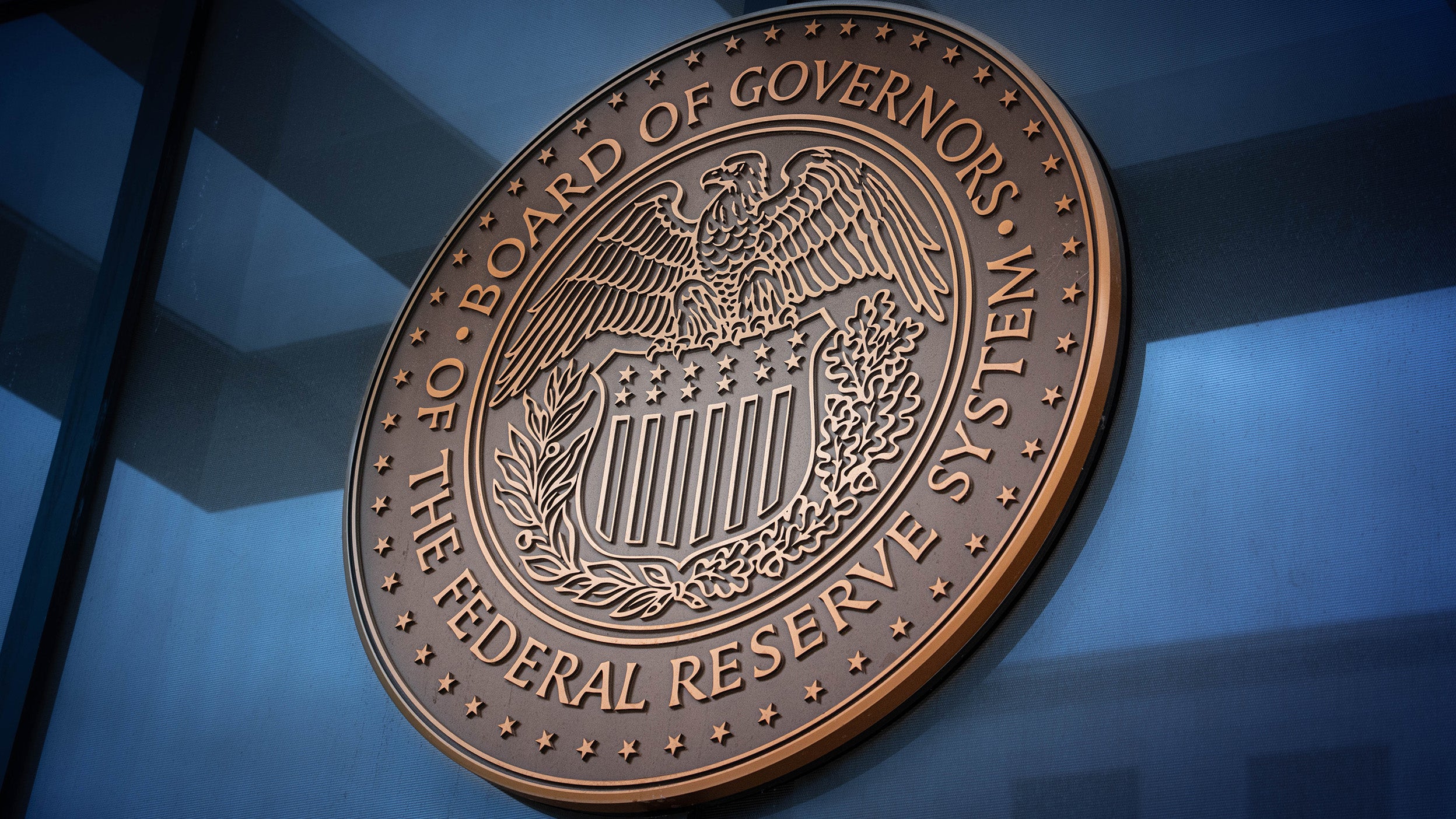
Markets and Economy Above the Noise: Rethinking 2025 narratives
In 2025, clear storylines on the Federal Reserve, AI stocks, and rates captivated us. But the numbers don’t always match the narratives.

A 90-day pause on the US-China tariffs was good enough to lift stocks, but not the US dollar.
Tariffs aren’t showing up in higher inflation yet, but Federal Reserve is likely to remain in wait-and-see mode until hard data turns.
Comments from Germany’s foreign minister pointed to greater confidence that defense spending will likely rise meaningful.
We’ve already used the roller coaster analogy, and it’s time to use it again as we moved higher on this market ride last week. The S&P 500 Index is now less than 4% below its all-time high1 following a strong week for stocks. The German DAX Index closed out the week at an all-time high and has risen nearly 19% in 2025.2 Though stocks moved higher, the US dollar resumed its downtrend.3
A series of key points helped contribute to the better tone of the markets. It almost felt too good to be true.
On Monday, May 12, the US and China agreed to a 90-day “ceasefire” to what up to that point could only be characterized as an escalating trade war. As part of the deal, US tariffs on China should fall from 145% to 30%, and Chinese tariffs on the US should be lowered from 125% to 10%. US stocks surged following the announcement, especially the more cyclical parts of the markets.4 One must remember, however, that tariffs remain much higher than they were in 2024 and much of the previous 100 years. But markets tend to respond to the second derivative in news — i.e., things are getting less bad.
President Trump made his first international trip in his second term, heading to the Middle East. Large defense agreements were signed — Saudi Arabia agreed to purchase around $142 billion of arms,5 the largest defense deal ever signed. Many tech names were driven higher by deals that should allow Nvidia to export the highest end chips to the region.
US Consumer Price Index (CPI) inflation for April came in softer than expected for the third month in a row. Headline inflation fell to 2.3%, its lowest level since 2021, and down from a peak of 9.1% in 2022.6 Tariffs haven’t had a material impact on the latest inflation print, as many businesses had previously built inventories to try and avoid having to raise prices immediately once tariffs took effect. Elsewhere in the inflation data, the cost of hotel and motel rooms was down 10 basis points in April, and airfares were lower too.7 This was to be expected, in our view, since foreign tourism to the US has been falling markedly in recent months.
The mix of lower tariff rates and encouraging inflation data suggests the Federal Reserve (Fed) will likely remain on hold for now. A wait-and-see approach could give the Fed flexibility to respond based on how conditions develop. A resurgence in inflation would argue for fewer or potentially no rate cuts, while a weakening labor market would likely result in a further reduction of the federal funds rate. With monetary policy still restrictive, we believe the Fed has room to react with a later-but-larger cut should the economy show sudden signs of weakness. Overnight index swaps now suggest the market expects two cuts in 2025.8 Atlanta Fed President Raphael Bostic commented that he expects only one cut this year unless uncertainty resolves itself in weaker hard data.9
House Republicans released the tax provisions of what President Trump has called his “big, beautiful bill.” Key proposals include an extension of the 2017 Tax Cuts and Jobs Act, temporary tax breaks on overtime pay, new deductions for tips, and spending cuts to entitlement programs. The tax package, along with the broader bill, isn’t in its final form and will be subject to further negotiations in Congress before being signed into law.
Despite tariff de-escalation, fewer attacks on Fed Chair Jerome Powell, and benign inflation prints, long-term US Treasury yields have drifted higher in recent weeks. The 30-year Treasury rate recently hit 4.97%, a level not seen since 2023,10 and just below the 5% threshold that twice this year resulted in the administration adjusting its stance on tariffs.
Higher yields have reflected a complex mix of lower recession risks, higher inflation expectations, and US fiscal deficit worries as Congress proposes further tax cuts without matching offsets in spending. Deficit concerns have shown up in higher credit default swap prices on US government debt, too. While the Treasury market may remain under some pressure from bond vigilantes, we are minded not to panic. The US has many levers to pull when it comes to its debt and deficit. We expect the debt ceiling will be lifted (just as it was in 2023 and many periods before), foreign investors haven’t dumped US Treasuries, and the Fed isn’t likely to buckle to pressure.
Germany’s Foreign Minister Johan Wadephul said the nation would support demands from the US to increase defense spending to 5% of gross domestic product (GDP). According to NATO, Germany spent 2.4% of its GDP on defense in 2024. Germany joins Poland in supporting the Rutte plan. That 5% will be split: 3.5% for traditional defense spending, including weapons systems and personnel, and 1.5% allocated to infrastructure, intelligence, and civil protection. In applying that split, the spending is more likely to pass political hurdles. This news is another element of support for those who think Europe has turned a fiscal corner and might see better growth as a result in the coming years.
After the series of good news and good rhetoric through the week, it was disappointing to see the week rounded out with US consumer confidence data from the University of Michigan hitting 50.8, the second-lowest reading on record. This suggests that consumers are anxious about the growth outlook.11 Expectations for inflation in one year’s time are now 7.3%, and 4.6% in 5–10 years.12 Another signal of weaker growth and stronger inflation expectations means the Fed’s decision process just got even harder.
|
Data release |
Why it’s important |
|---|---|---|
Monday |
US leading indicators |
Hard data in US has remained strong while sentiment data is weakening. Leading indicators should provide a good sense of where the economy is heading. |
Monday |
Europe Consumer Price Index (CPI) |
Insight into effects of trade conflict on consumer prices in Europe |
Tuesday |
Germany Producer Price Index |
Clarity on expected path of monetary policy |
Tuesday |
Canada (CPI) |
Insight into effects of trade conflict on consumer prices |
Wednesday |
US mortgage applications |
Insight on whether high rates will continue to weigh on US housing activity |
Wednesday |
UK CPI |
Clarity on expected path of monetary policy |
Thursday |
US existing home sales |
Economic leading indicator, which has been relatively weak amid higher rates and historically low housing inventory |
Thursday |
UK Purchasing Manager Index |
Leading indicator signalling the likely direction of the economy |
Friday |
US building permits |
Economic leading indicator, which has been relatively weak given current state of housing market |
Friday |
Germany GDP |
Perspective on how economy was fairing ahead of the trade conflict |

In 2025, clear storylines on the Federal Reserve, AI stocks, and rates captivated us. But the numbers don’t always match the narratives.

For investors looking to diversify their mega-cap technology exposure, improving growth and falling interest rates may be good reasons.

A rate cut, which markets are pricing in despite Fed member differences, and an expected improving economy in 2026, could support stocks.
Important disclosures
NA4506977
Image: Zbynek Pospisil / Getty
All figures in USD unless otherwise stated.
All investing involves risk, including the risk of loss.
Past performance does not guarantee future results.
Investments cannot be made directly in an index.
This does not constitute a recommendation of any investment strategy or product for a particular investor. Investors should consult a financial professional before making any investment decisions.
A basis point is one-hundredth of a percentage point.
Investments in companies located or operating in Greater China are subject to the following risks: nationalization, expropriation, or confiscation of property, difficulty in obtaining and/or enforcing judgments, alteration or discontinuation of economic reforms, military conflicts, and China’s dependency on the economies of other Asian countries, many of which are developing countries.
Bond vigilantes is a name given to bond investors who sell bonds in protest against a monetary or fiscal policy they fear is inflationary.
The Consumer Price Index (CPI) measures the change in consumer prices and is a commonly cited measure of inflation.
A credit default swap (CDS) is a financial derivative that allows an investor to offset or swap their credit risk with that of another investor.
The fed funds implied futures rate is the difference between the spot rate and the futures rate, which is an interest rate that can be calculated for any security with a futures contract.
Gross domestic product (GDP) is a broad indicator of a region’s economic activity, measuring the monetary value of all the finished goods and services produced in that region over a specified period of time.
Inflation is the rate at which the general price level for goods and services is increasing.
Monetary easing refers to the lowering of interest rates and deposit ratios by central banks.
An overnight index swap (OIS) is an interest rate swap involving the overnight rate being exchanged for a fixed interest rate. An overnight index swap uses an overnight rate index, such as the overnight federal funds rate, as the underlying rate for its floating leg, while the fixed leg would be set at an assumed rate.
A policy rate is the rate used by central banks to implement or signal their monetary policy stance.
The S&P 500® Index is an unmanaged index considered representative of the US stock market.
The US Dollar Index measures the value of the US dollar relative to the majority of its most significant trading partners.
The University of Michigan Consumer Sentiment Index is published monthly, based on a telephone survey designed to assess US consumer expectations for the economy and their personal spending.
Stocks of small- and mid-sized companies tend to be more vulnerable to adverse developments, may be more volatile, and may be illiquid or restricted as to resale.
In general, stock values fluctuate, sometimes widely, in response to activities specific to the company as well as general market, economic and political conditions.
The risks of investing in securities of foreign issuers can include fluctuations in foreign currencies, political and economic instability, and foreign taxation issues.
The opinions referenced above are those of the author as of May 16, 2025. These comments should not be construed as recommendations, but as an illustration of broader themes. Forward-looking statements are not guarantees of future results. They involve risks, uncertainties and assumptions; there can be no assurance that actual results will not differ materially from expectations.
This link takes you to a site not affiliated with Invesco. The site is for informational purposes only. Invesco does not guarantee nor take any responsibility for any of the content.